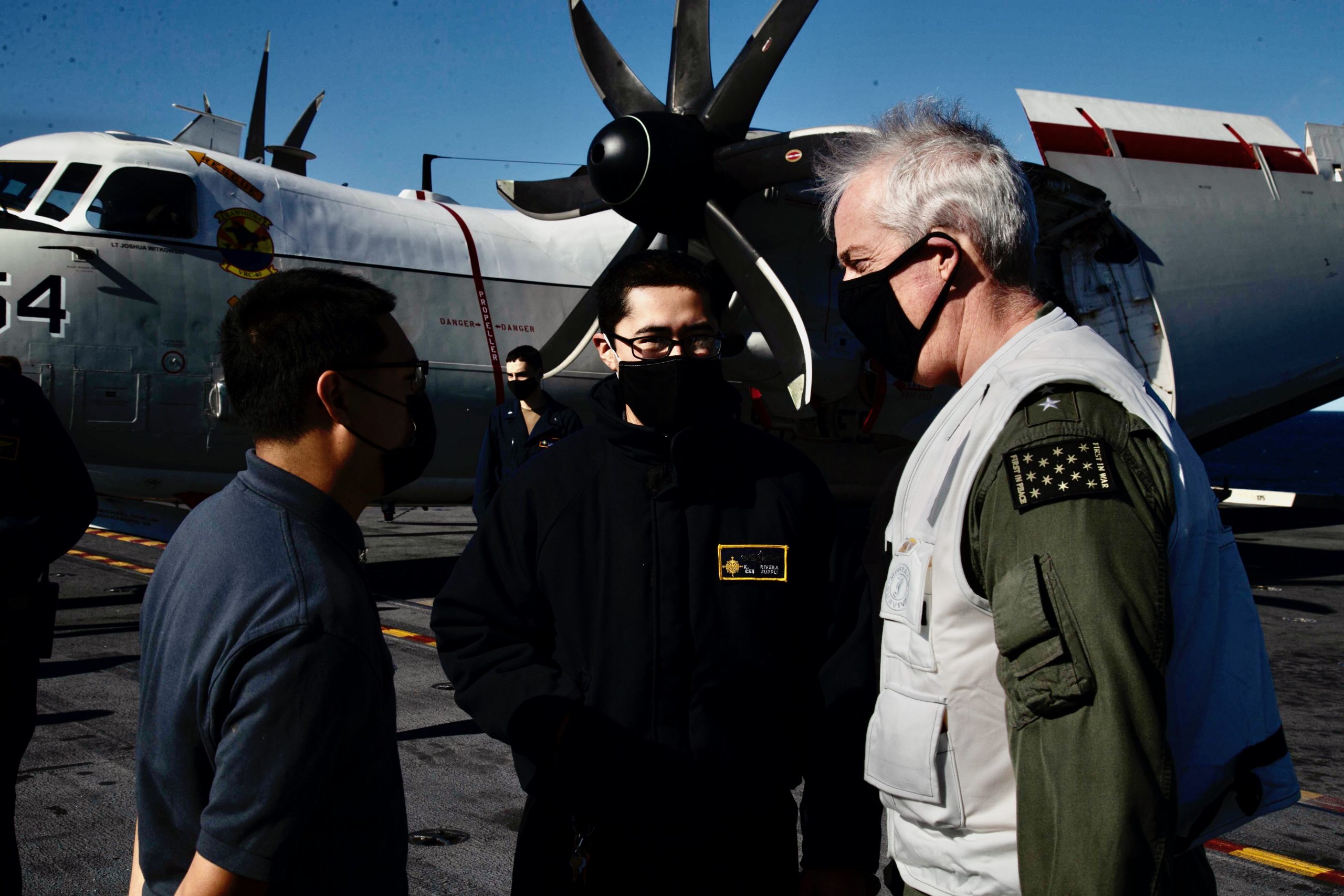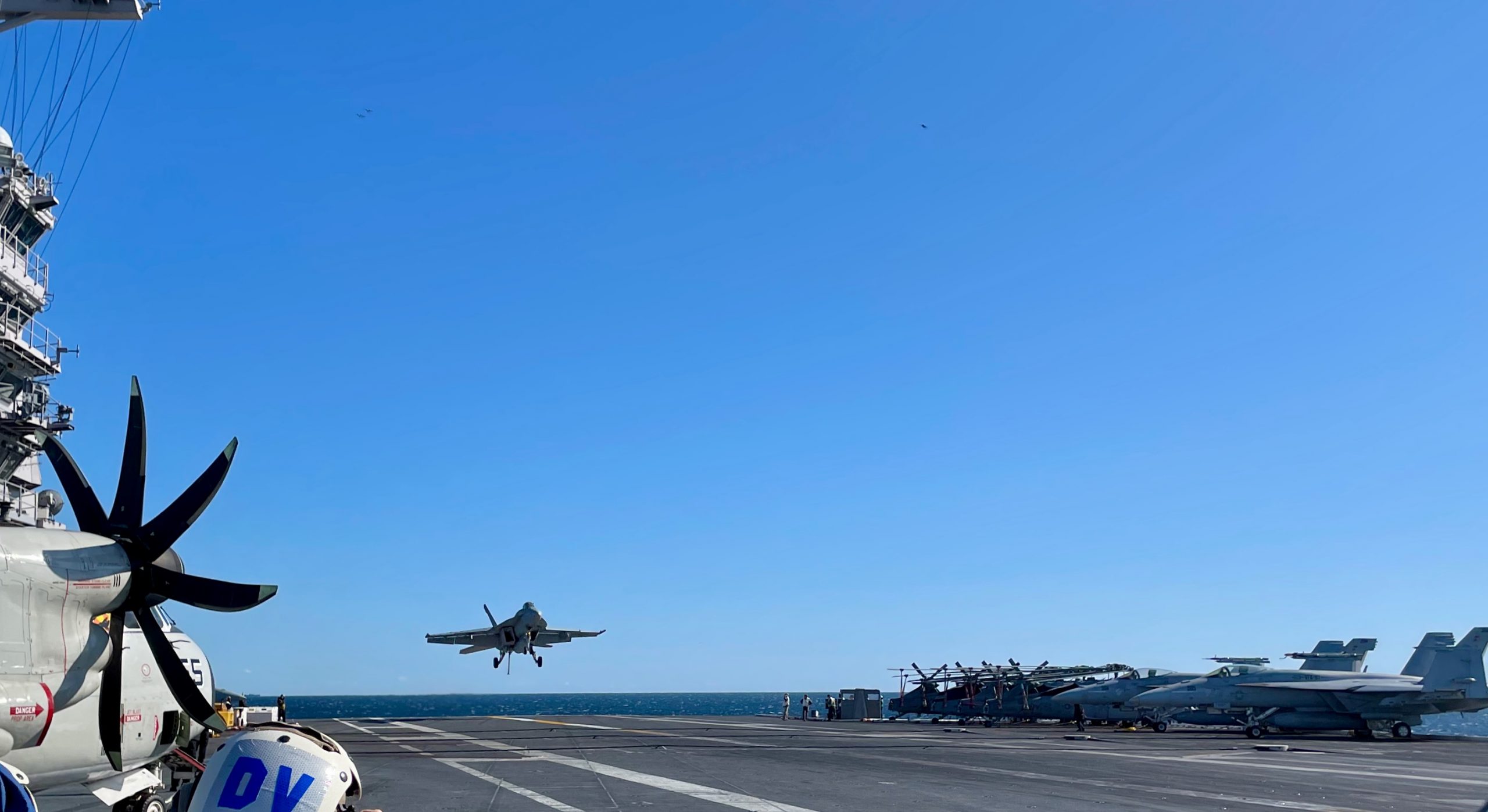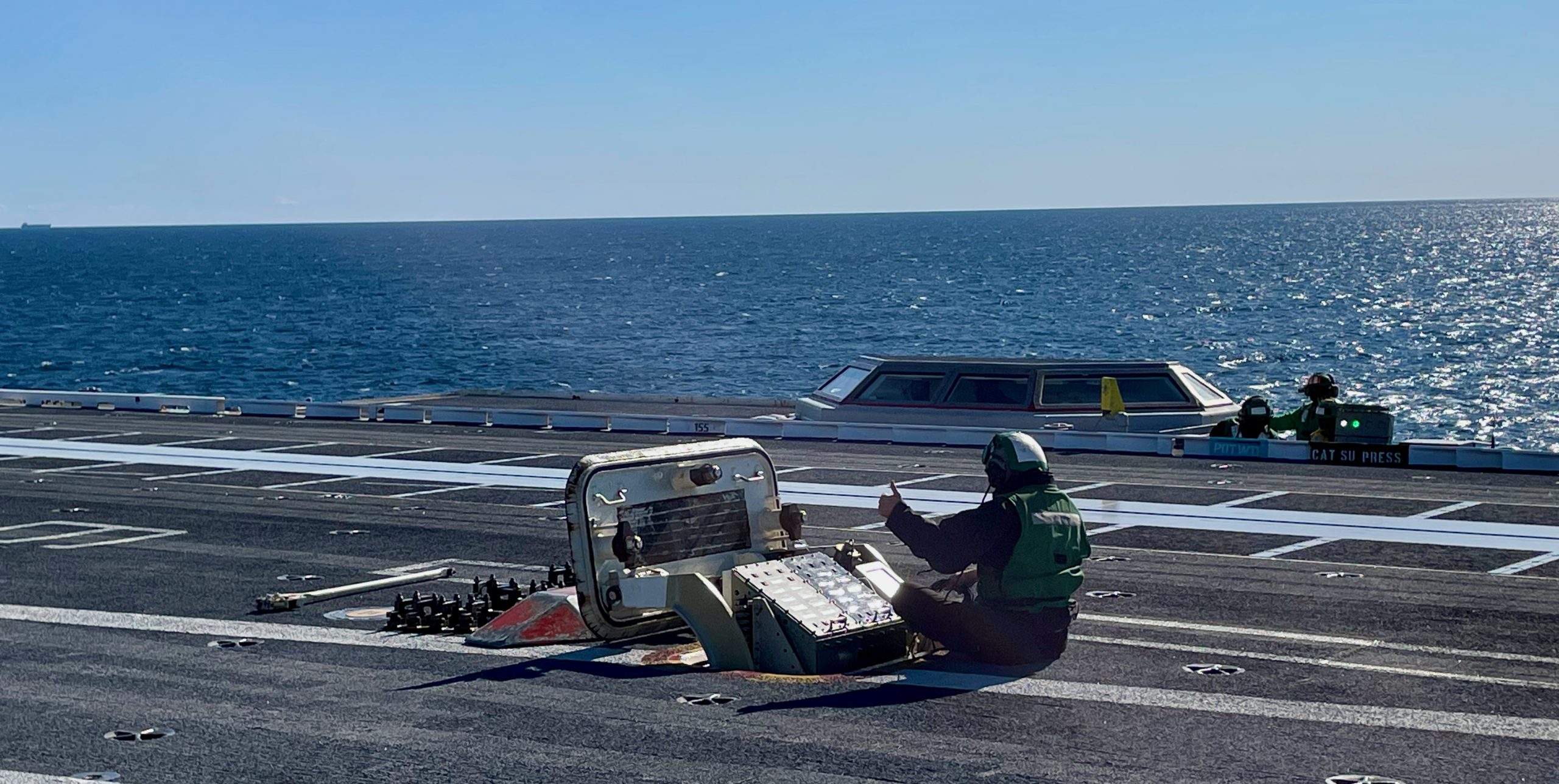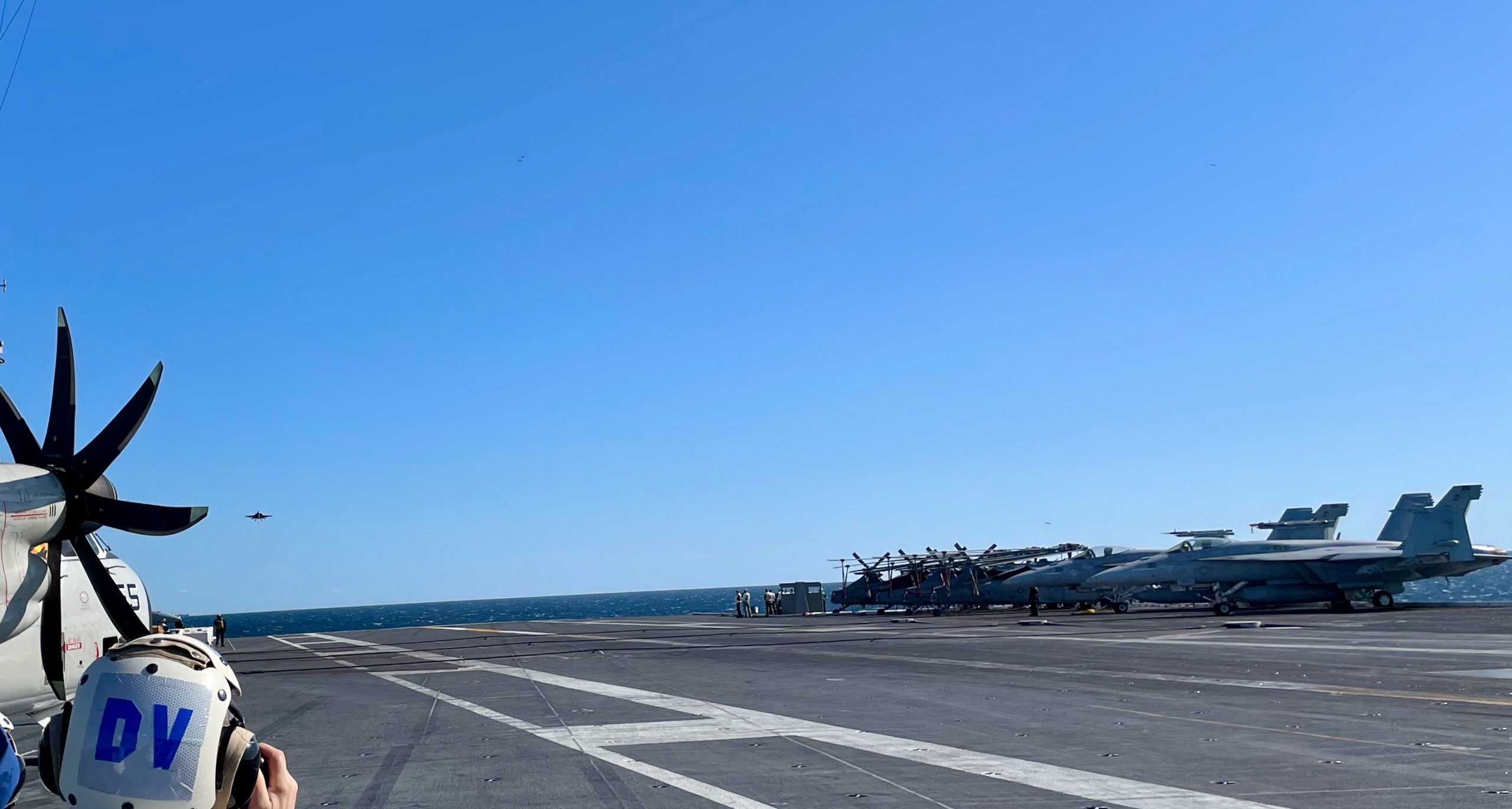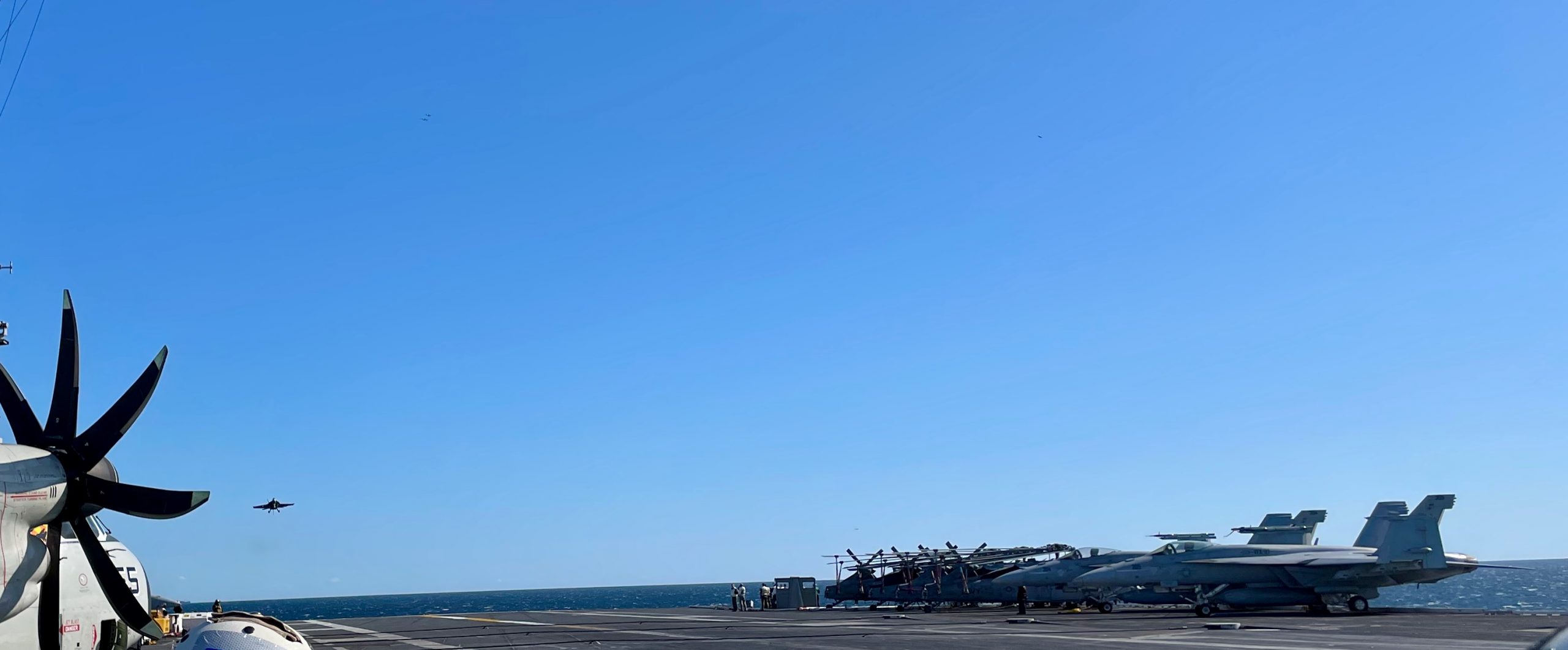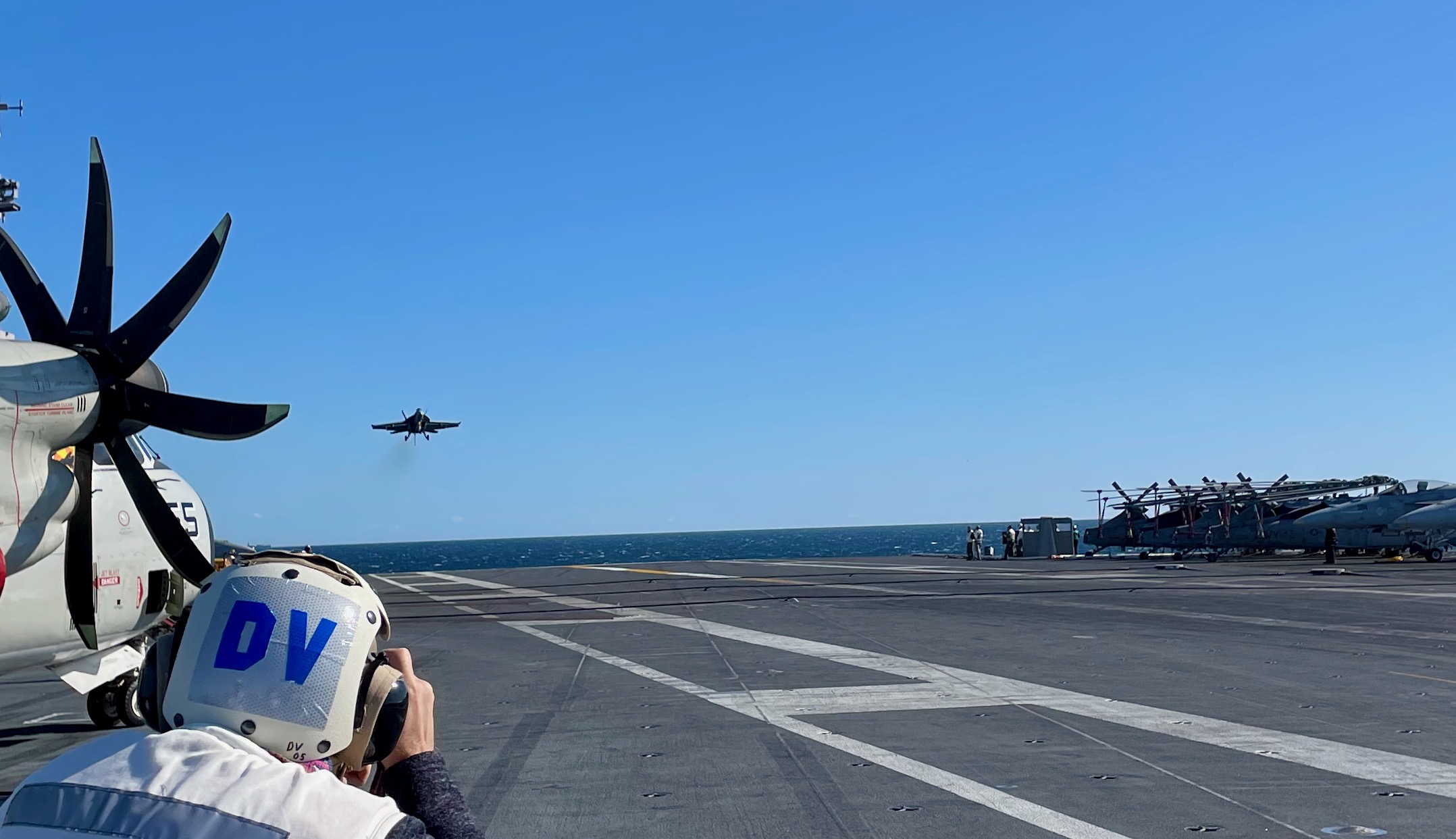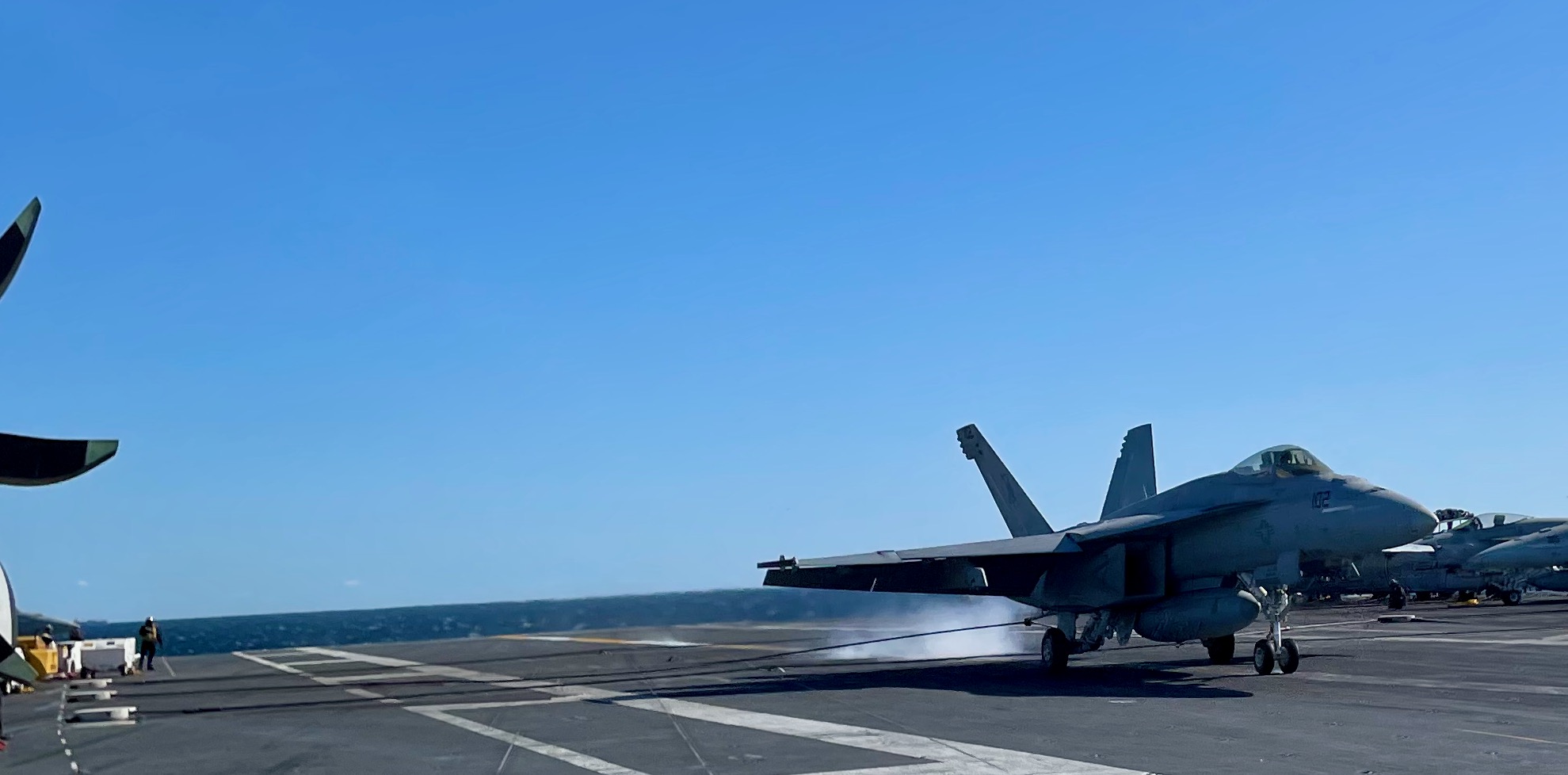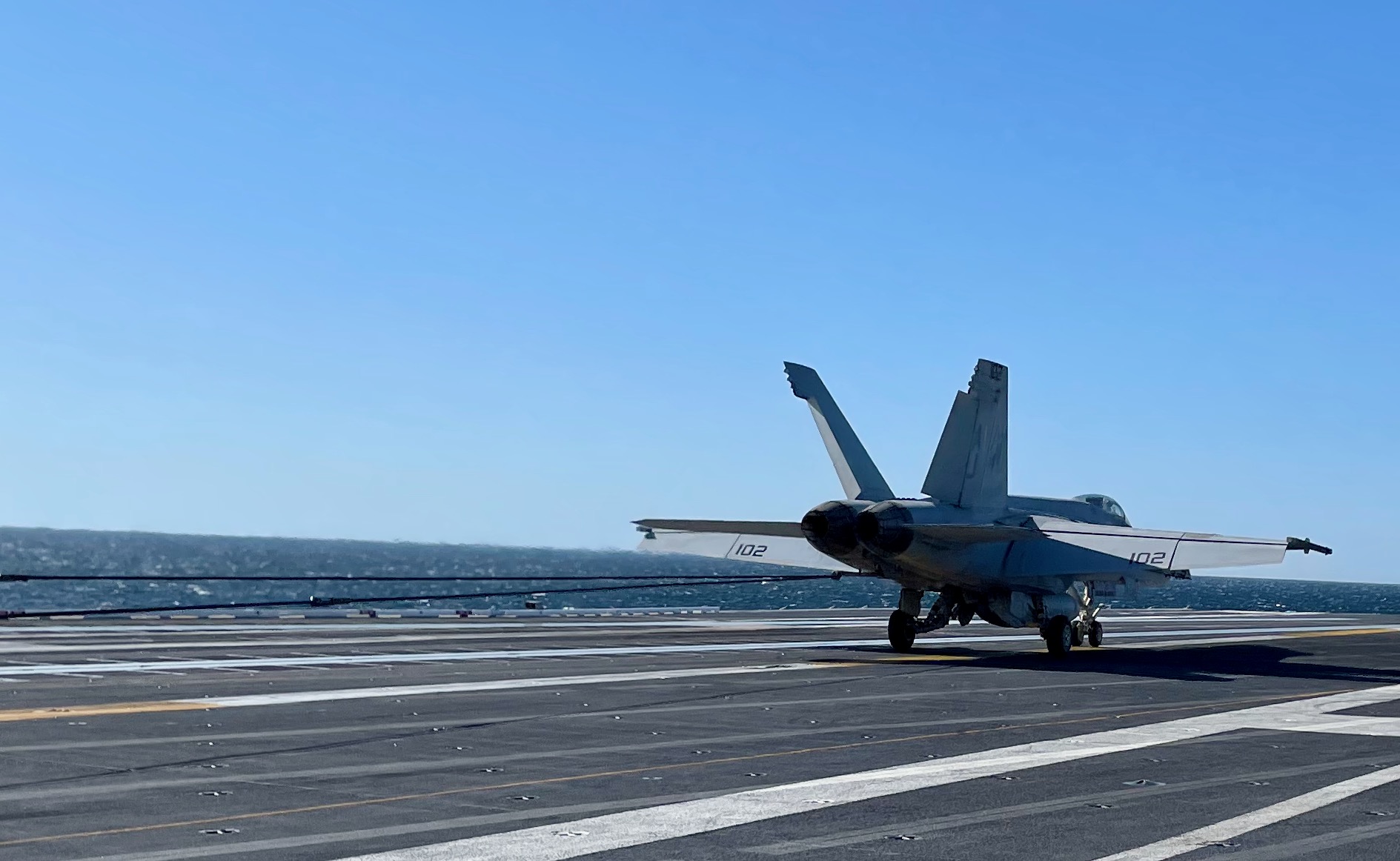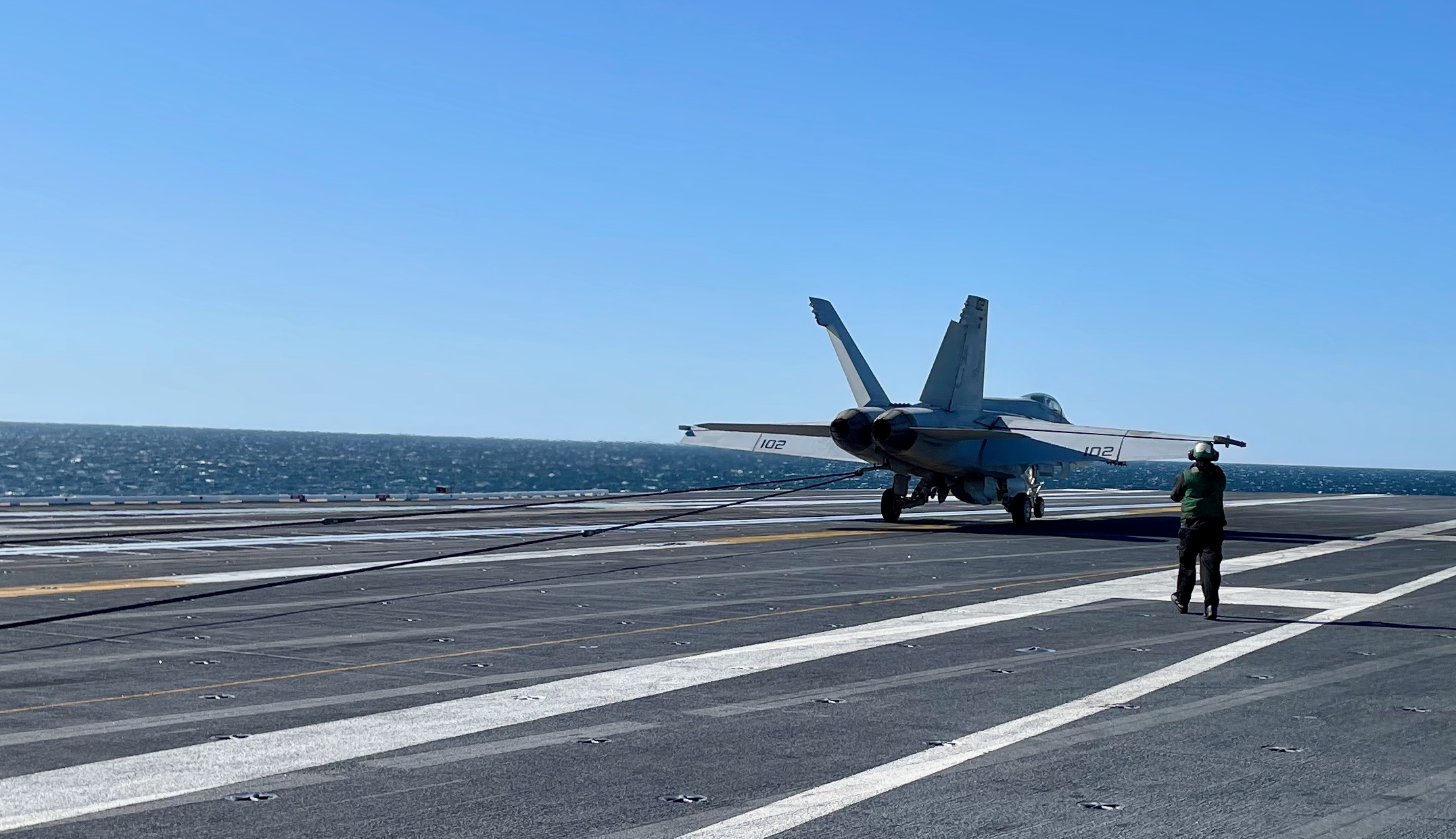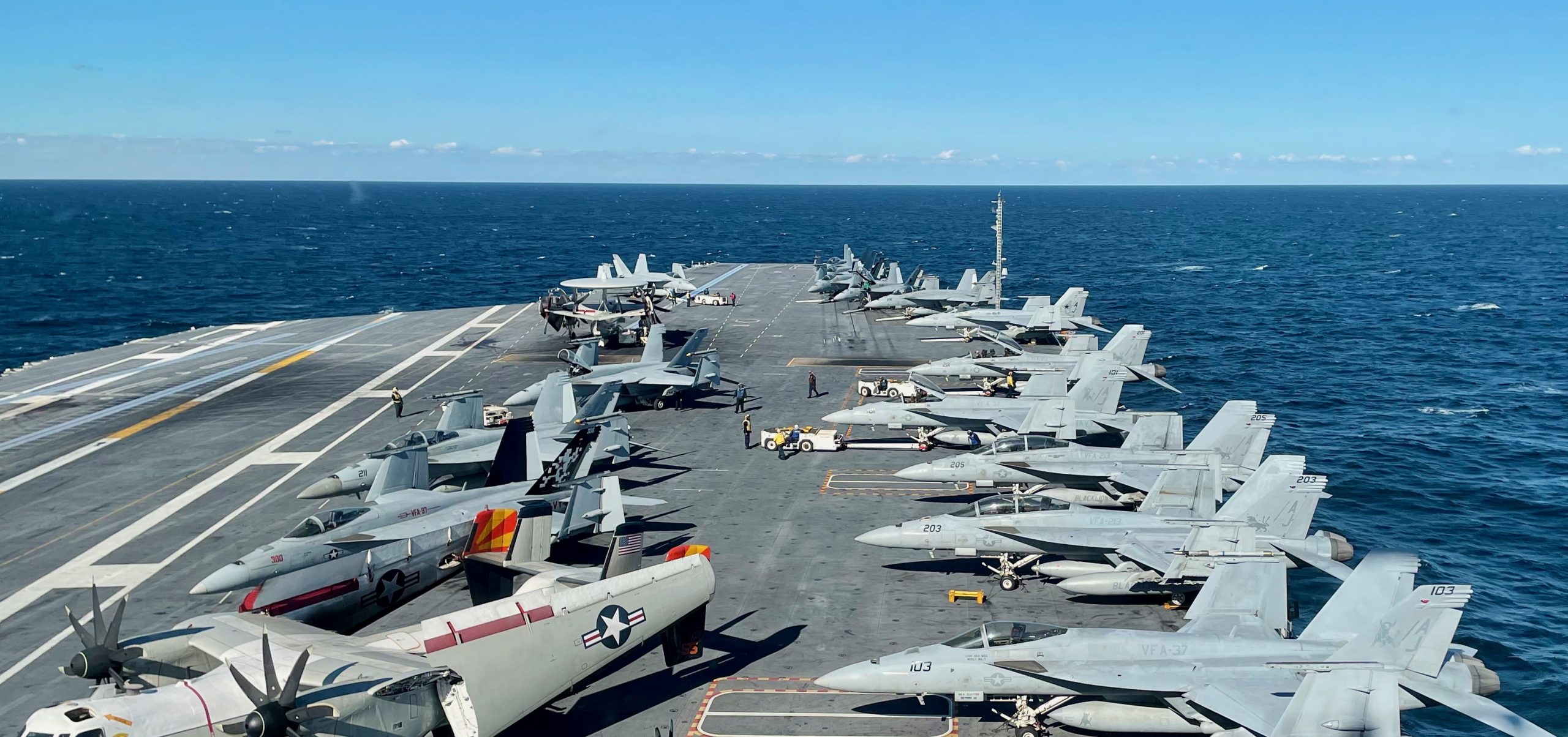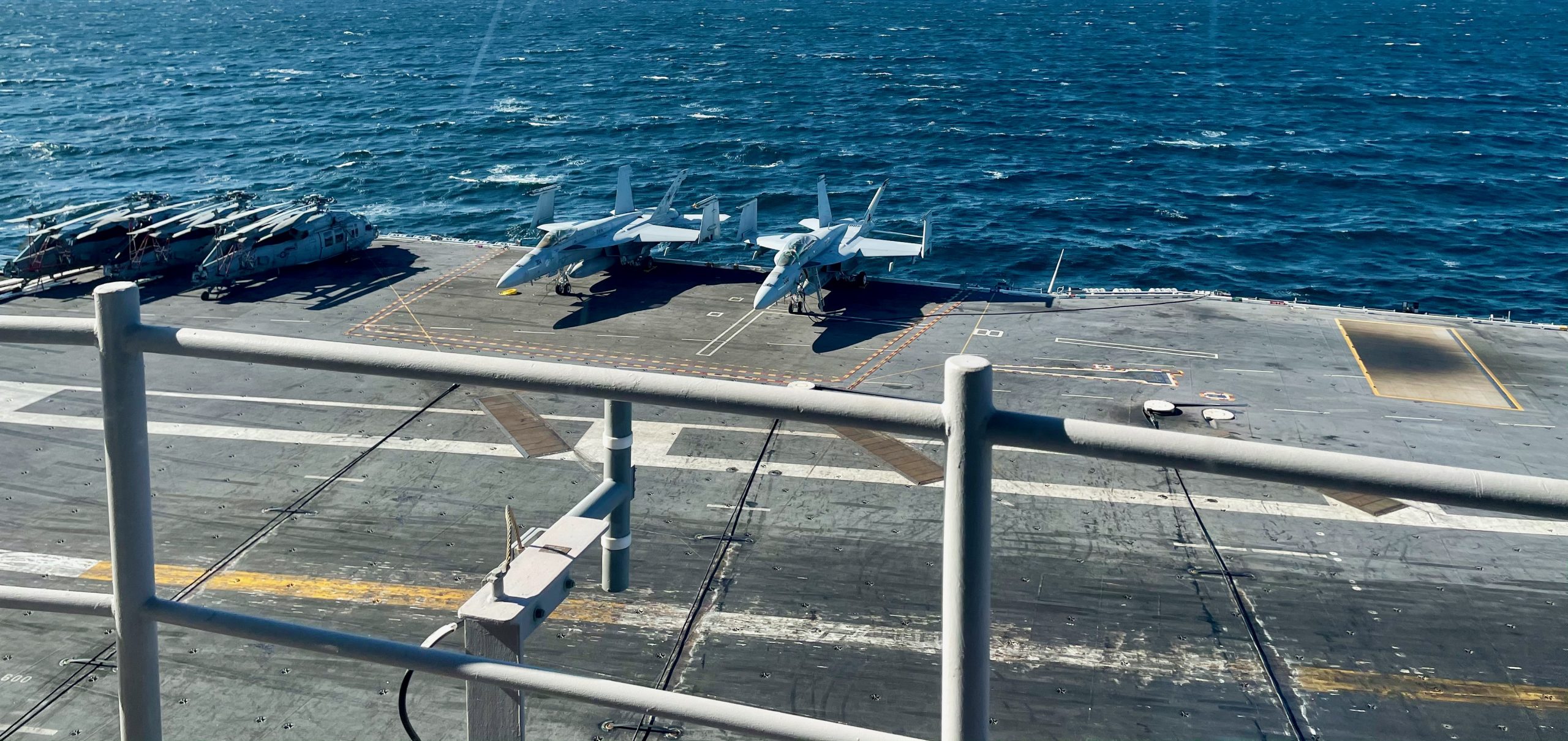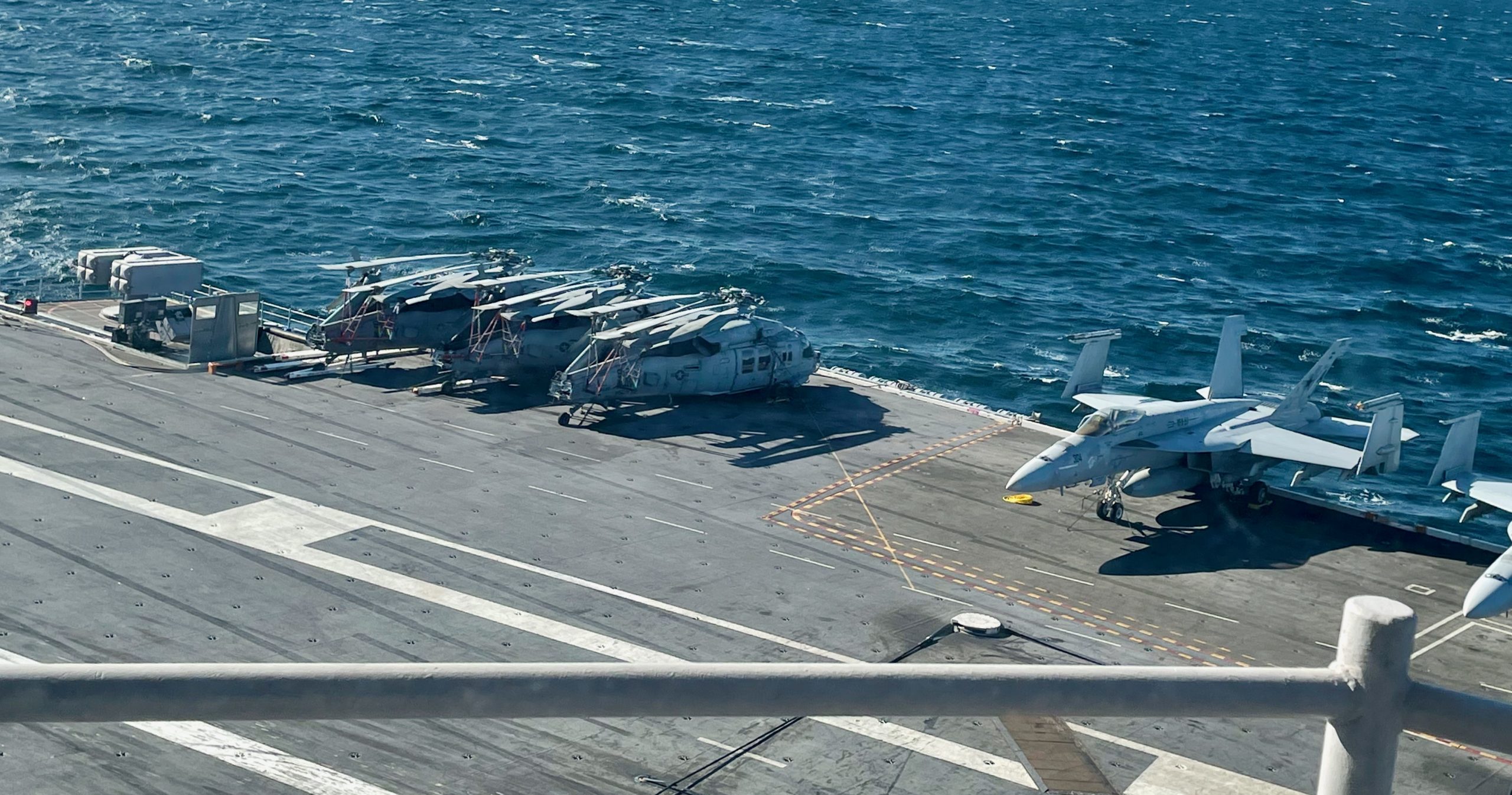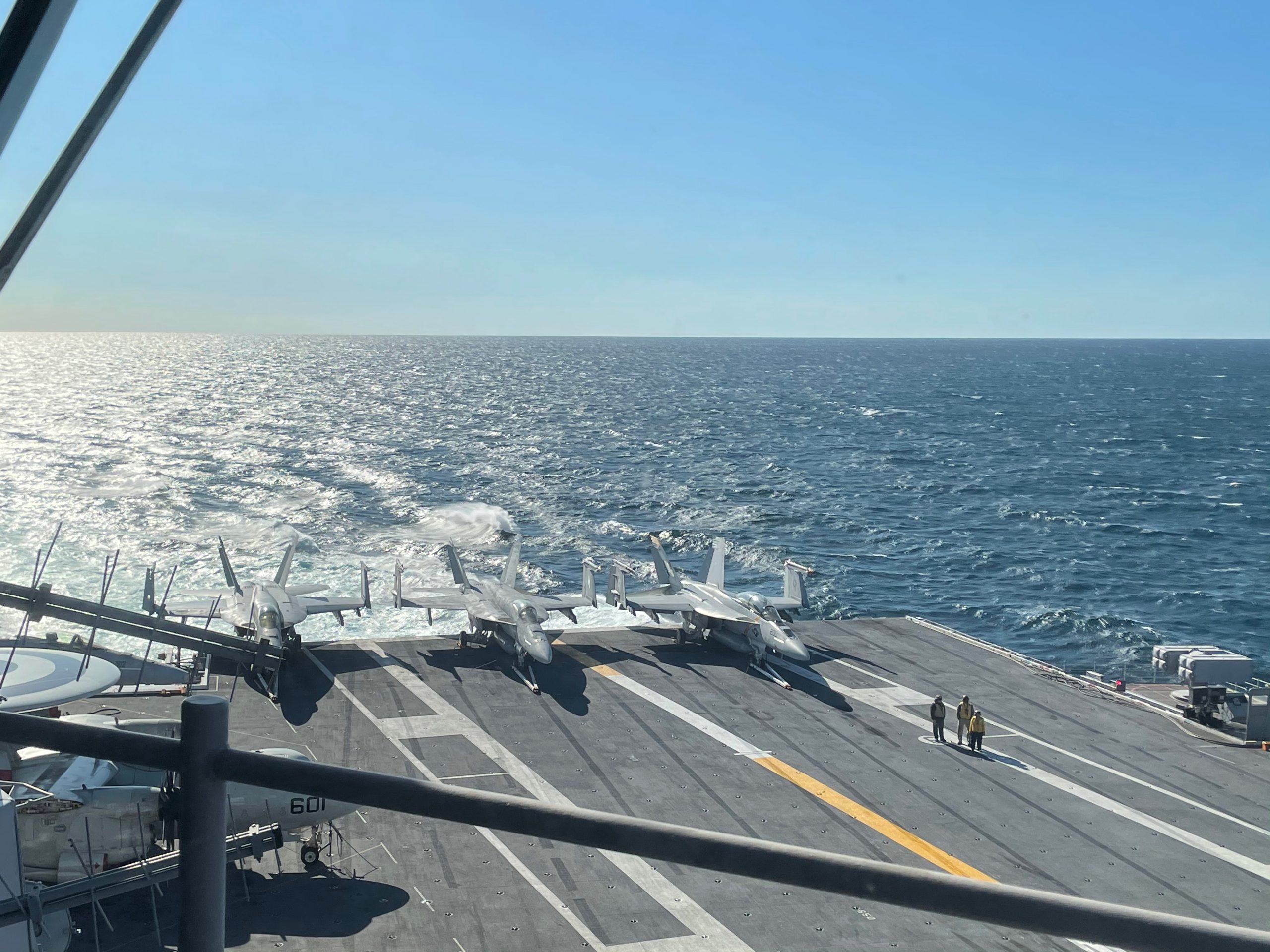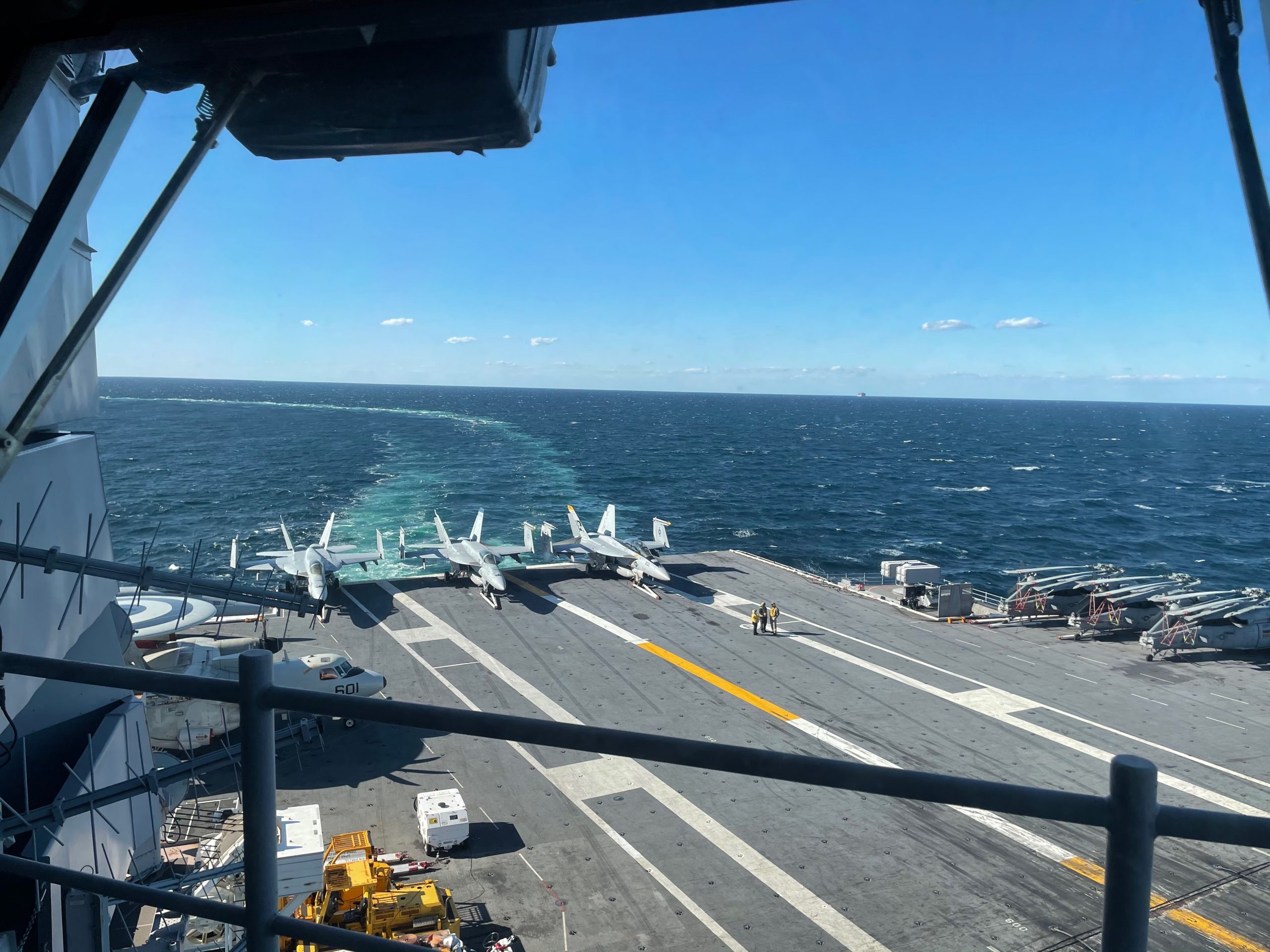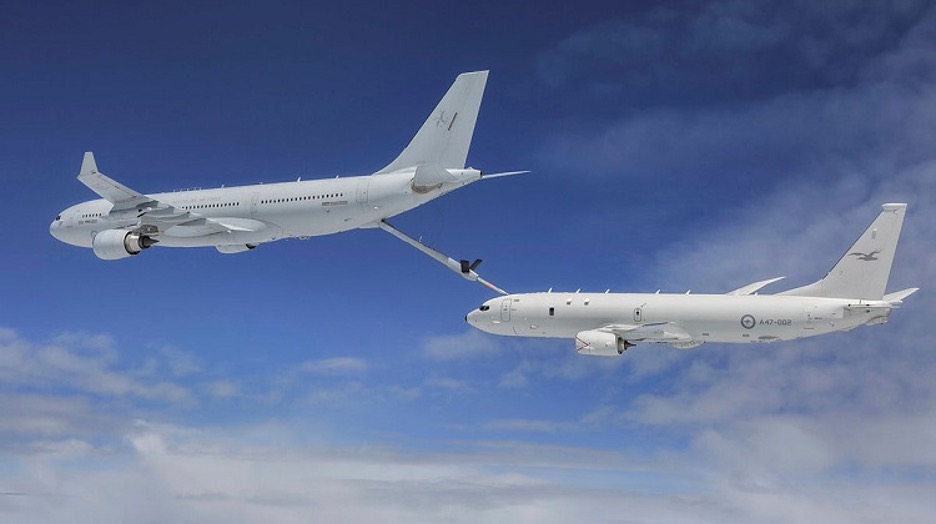By Robbin Laird
The day before we flew to the USS Gerald R. Ford, I sat down with Rear Admiral Meier, Commander, Naval Air Force Atlantic, in his Norfolk office, to discuss the way ahead for Naval Air Force, and the next generation large deck carrier.
I would call it that rather than simply a large deck aircraft carrier, because of the warfighting ecosystem which is being crafted by the U.S. Navy and the joint and coalition force to shape a kill web ecosystem.
This is one in which each core platform works with its appropriate mates to shape interactive strike and defense combat clusters operating across the extended battlespace.
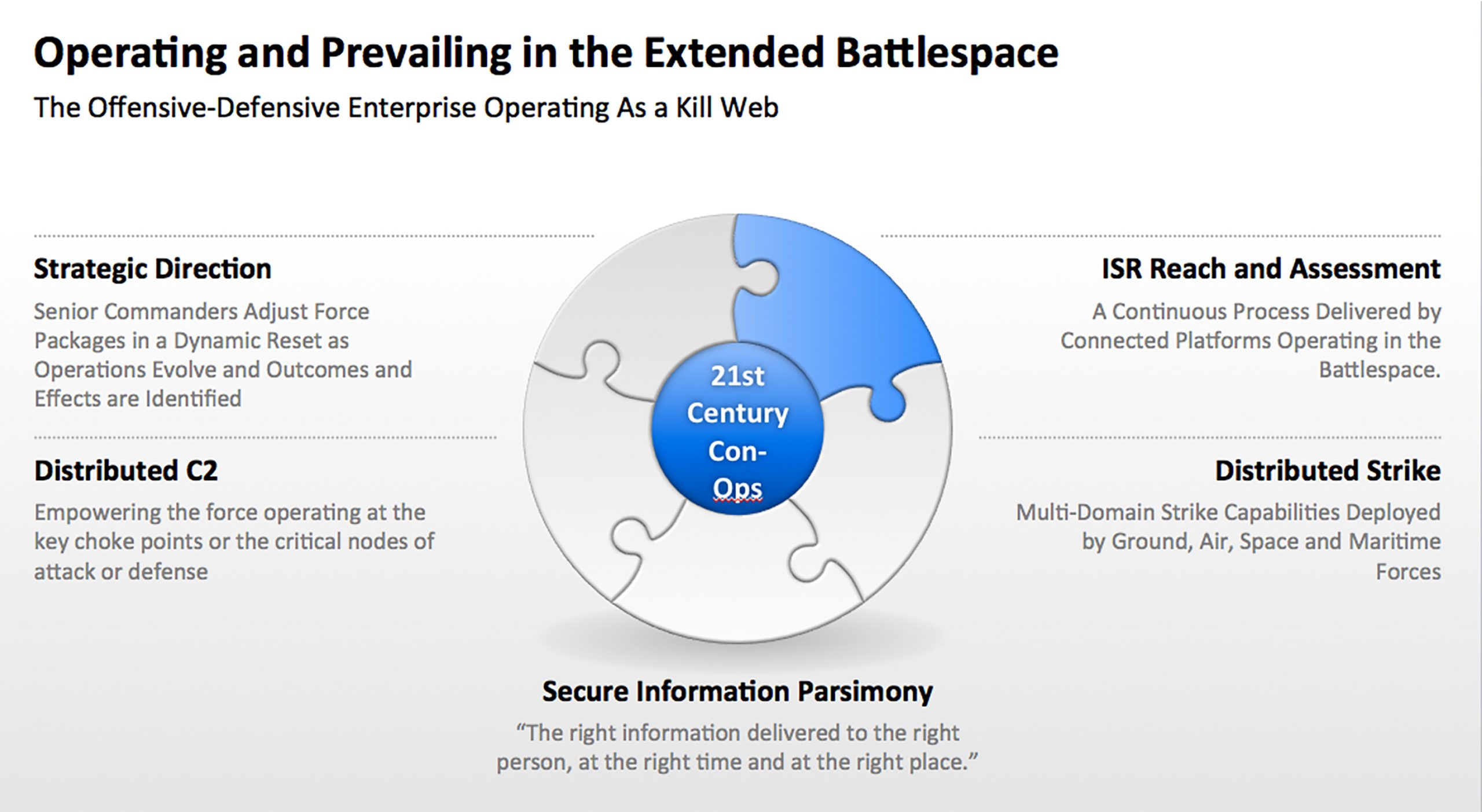
I had just returned from Resolute Hunter being held at NAWDC at Fallon Naval Air Station, so we started with this aspect of the evolving ecosystem.
Question: There is the venerable Red Flag which is hosted by the USAF and in which participants are working the kill chain, and the metrics of success are either kill or be killed.
The Navy is now launching Resolute Hunter which is about the sensor networks and decision making to determine how to deliver strike to the appropriate targets at the required speed of delivery.
How would you characterize Resolute Hunter?
Rear Admiral Meier: The origins of Red Flag and of TOP GUN were largely tactically focused.
Resolute Hunter is focused on shaping an evolving operational approach leveraging the sensor networks in order to best shape and determine the operational employment of our forces and the delivery of the desired combat effect.
The USS Gerald R. Ford is entering the Resolute Hunter environment.
How Ford plugs into the data transfer and data fusion environment is enormously important to its operations and how it contributes to the overall force effectiveness.
The dual band radar onboard is a big part of that along with the mission systems and its entire approach to C2 within the fleet.
Question: Having visited Ford with Ed Timperlake when you were the CO and it was being built and then going back last month to see the maturing ship, I would argue that the Ford is the most formidable warship ever built.
But then again Bismarck was the most powerful battleship ever built. It failed because of being an odd man out, whereas obviously with the Ford you are focused on how it anchors, leverages and contributes to the evolving maritime kill web approach.
Is this a fair way to put it?
Rear Admiral Meier: It is. I think it’s a very fair look at it.
The comparison between the Bismarck is interesting too, because the Bismarck was designed as an open ocean battleship and was never able to get to the point where they had the freedom of action and they didn’t have the air cover and support and were ultimately destroyed because they didn’t have the capacity or capability for a defense in depth concept of operations.
From the very beginning, defense in depth has been foundational to the carrier fleet.
You can maneuver in space with your mobile defense in depth network of the strike group itself, the air wing and all of the other surface assets, that’s a robust capability to operate really at a time and place of our choosing, not of our adversaries choosing.
And with regard to the maneuver space, we are working with the joint and coalition force to expand the capabilities of that force as well.
For example, with the Marines working naval integration and expeditionary basing, they can contribute significant ISR and fires support for the fleet.
We are working new ways to integrate with the USAF, as seen in the Resolute Hunter exercise as well.
We are working on ways to enhance a truly joint war fighting force able to synchronize limited precious resources on high value targets.
And to do that in a way that optimizes the effects on those targets and makes the weapons magazines last longer.
Question: The shift from the land wars to shaping approaches to deal with peer competitors, for the U.S. Navy is significantly about the return to blue water operations, including blue water expeditionary operations.
How would characterize the way ahead?
Rear Admiral Meier: In some ways, it is back to the future, and remembering what we did in World War II in the Pacific but significantly updating it with our new technologies, connectivity, distributed maritime operations and understanding the nature of the adversaries we are dealing with.
It is more of a maneuver and raid concept where we pick the time and choose the place and location to be.
Fundamental to that is the capability to do that in a manner that our adversary doesn’t track, detect, target us.
And that does get a little bit harder as technology advances in terms of overhead sensors, space, long range, ISR, those sorts of things as well as emissions control.
We are working to minimize the likelihood of our detection or operating in ways unanticipated by the adversary.
Question: There seems to be an assumption by some of adversaries that they can sit back in territory, launch strikes and get effects without receiving a response.
Clearly, we need to update our weapons enterprise and with the withdrawal from the INF treaty, the opportunity to shape longer range strike seems a key one.
How do you view this challenge?
Rear Admiral Meier: Our force is not designed nor intended to be an offensive force, yet if deterrence fails, we certainly have that capability.
That capability is enhanced with range and speed.
Range and speed can refer to the platform, the shooter or the weapon itself.
I will tell you after really a generation of Naval service where we have focused on land wars in Asia, we’ve really woken up to the need for longer range strike.
It will not be long before we have maritime strike Tomahawk, and hypersonics will be here before we know it.
We’re making great advances in those areas.
We’re talking about a very fluid battlespace, where both blue and red are maneuvering within that battlespace.
The next war we expect to be a maritime fight at extreme ranges.
From a “fighting Navy” perspective, I think it’s imperative that we maintain our tactical and operational edge that includes forward presence, lethality, but, just as we discussed earlier, increasing lethality at range and at speed, which are things that quite frankly we have not focused upon during the land wars.
But when you talk about the maneuver capability of a Ford-class Aircraft carrier, with the air wing range beyond that and the weapons that the aircraft carry, we are delivering significant reach into the battlespace.
We’re engaging in training drills exercises and operating at some ranges that we have not ever done off of the decks of aircraft carriers; it’s really impressive.
Question: You spoke of enhanced ranges.
I think that comes from how the sensor networks interact with C2 at the tactical edge as well as shaping more effective and rapid fleet wide operational decision making.
It is also focusing on the carrier wing, as the carrier wing of the future becomes incorporated on the decks of the carriers, an integratable air wing, with reach beyond their range.
And with the kind of third party targeting which kill webs enable, the operational reach of any particular platform in the maritime force is significantly enhanced as a kill web asset.
Notably, it will be important to leverage the significant numbers of F-35s operating in the Pacific conceived as enablers of a kill web and not just in terms of legacy fighters.
Does this make sense to you?
Rear Admiral Meier: It does on several levels.
The F-35 is a key element of making the air wing integratable in the sense you have described.
The MADL data links in the Pacific fleet of F-35s can provide the kind of significant reach we need in the Pacific.
Obviously, we will need to work the handoffs among aircraft and the security dynamics as well.
But the technical foundation is clearly there.
It can be forgotten by those not close to Naval aviation, that we have essentially had the same air wing for 20 years.
This is certainly not true for the decade ahead, where we have accelerated change with the introduction not just of replacement platforms, but significantly different ones and shaping new concepts of operations for the air wing, with the carriers in the distributed maritime operating space.
And we tend to have an iterative process that continues to build on itself.
From my time at Navy Warfare Development Command, it is clear that we’ve got a robust process of fleet experimentation and gaming both from theory or conceptual gaming to doing demonstrations at sea.
I think we’re on a pretty tight turning path with that process.
We continued our discussion the next day, November 17, 2020, onboard the USS Gerald R. Ford.
He had not returned to the Ford since he had relinquished command, and was onboard with the other senior commanders, and all of the warfighting command elements
What we saw onboard was cyclic operations by the squadrons onboard the Ford.
The speed of launch and recovery was on full display during out visit on November 17, 2020.
Currently, the Ford has 2/3 of its airwings on board, with elements of two air wings and four squadrons operating from the deck.
The carrier is at sea currently working what the U.S. Navy calls cyclic operations, this is where strike packages are launched in clusters, and then operate in the combat space to provide for the various missions done by the Navy at sea.
Normally, at this stage in the certification of a new carrier, cyclic operations would not be performed, but clearly that is not the case with the Ford.
A crucial aspect of the Ford are the C2 capabilities and roles of the carrier, which I visited in October but not on this visit.
The mission operations areas are much larger than on the Nimitz and are being configured for the kinds of information warfare as well maritime distributed operations which the new carrier will execute at greater distance in blue water maneuver warfare operations.
But what was on the ship at sea, and not visible during the October visit, were the full complement of warfare officers, bringing the various warfare competencies to the command deck.
One notable member was the commander of an Aegis destroyer, as Aegis will have a combat officer onboard the Ford working the various ways Aegis and the carrier will work together in the blue water maneuver space.
One marvelous moment in the visit, after having traversed the cavernous ship for several hours, was sitting down in the briefing room to be briefed by one of the squadron commanders.
This commander gave a rapid-fire brief bristling with information and enthusiasm and one might have missed the historic developments he referred along the way.
For example, I had to ask a question to slow this cutting-edge aviator down to highlight this little gem.
On November 9, 2020, the Ford air wings operated with ACC in a counter-air defense exercise with F-22s, and F-15s to shape a joint warfighting package.
This obviously would carry with it the C2 collaboration from land to sea in a warfighting training exercise.
And again, this is not the kind of exercise one would be expecting for the work up of a new carrier.
But that is really the point.
This is not a new version of a legacy carrier; this is a whole re-imaging of the large deck carrier being introduced into the new strategic situation and shaping new combat capabilities with the fleet, the joint services, notably the USAF and with coalition partners.
The eco-system being shaped within which the USS Gerald R. Ford is a key element is so different that Ed Timperlake and I are writing a book for USNI Press entitled the Maritime Kill Web, 21st Century Warfighting and Deterrence.
Towards the end of the visit, in a discussion with Rear Admiral Meier, he underscored that the standup of the Ford was occurring in a way that involved training for evolving warfighting operations, and not just doing trap and cat training onboard the ship.
As one viewed the squadrons operating off of the Ford that morning, it was the legacy airwing of the past twenty years landing and operating with the new combat infrastructure of the next generation carrier.
But as Rear Admiral Meier put it: “It is not difficult to see the air wing of the future operating off of this deck with much greater speed, agility and reach than the legacy air wing.
“But without the new infrastructure, just adding the new platforms, would not get the maximum effect from the integratable air wing.”
Note: One example of the new combat infrastructure on the Ford deck is in the in deck refueling capability.
The in deck refueling stations which are unique to the Ford keep refueling hoses out of the taxi paths to the catapult. (refueling stations which can refuel two aircraft at the at those stations.
This has a major impact because on the Nimitz the refueling crew has to carry several, lengthy connected fuel hoses which are heavy from the starboard side of the Nimitz class to do mid-deck refueling.
On the Ford, the hoses are right there beside the in-deck refueling stations and rather than having to have a crew of 5 people to bring the hoses 150 feet to mid-deck and do refueling, you only need two crew to man the in-deck refueling stations.


